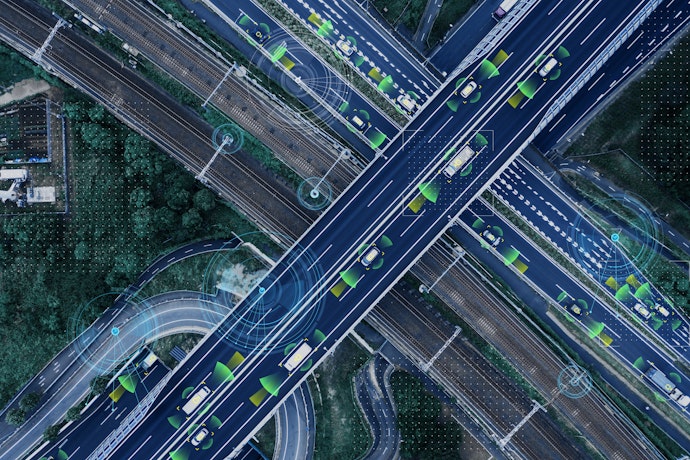How smart video fuels smart business
Learn how innovations in video powered by AI and machine learning are helping to reshape safety and efficiency.
Read more
According to the National Highway Traffic Safety Administration (NHTSA), 37,133 people died in motor vehicle crashes in 2017—and 3,166 of those were distraction-related crashes in the United States. In-vehicle automation technology can help reduce a number of negative driver behavior and potential errors, contributing to safe vehicle operations via the simplification of driving tasks.
The trucking industry is joining the consumer automotive industry in tracking an autonomous driving future. And while it’s important to remember that, no matter the size or shape of the vehicle, safety is something that can never be fully automated, there are features that can help organizations across a number of vehicle-dependent industries.
Many of these helpful features are already implemented into current vehicle technology or GPS fleet tracking solutions, which work to improve safety for both trucking fleets and the vehicles with which they share the road.
Automated Driver Assistance Systems (ADAS) are automotive electronic systems within a vehicle that are intended to help promote safety by aiding a driver with a variety of difficult or repetitive tasks, including parking and driving. They can be built into a new vehicle by the automaker or OEM, or added to existing fleet vehicles using sensors like dashcams to provide computer vision and early warning systems for commercial drivers.
An ADAS is a stepping stone towards fully autonomous, self-driving cars and commercial vehicles, which are still in early stages of development—while ADAS technologies are critical for safe autonomous vehicles, they still require a human driver to do the majority of the driving and decision making behind the wheel. The goal of an ADAS system is to automate and bolster vehicle safety by making drivers aware of possible issues, helping to avoid collisions and simplifying daily vehicle operation.
The changing landscape of the commercial driving industry places equal responsibility on drivers to improve their time-honored operator skills with newly available information, and on business owners to organically cultivate a culture of safety within each of their carriers. Whether your fleet is large or small, safety needs to be priority number one to ensure the growth and longevity of your business.
When it comes to ADAS features, some safety features are already commonly used, while new technologies are on the horizon to be widely adopted by the automotive industry in the future. With this in mind, here are fifteen ADAS features that can help improve driver and road safety:
When it comes to improving fleet safety, nothing can replace drivers who are aware and focused on their own safety as well as that of the drivers around them. Each member of your team, from fleet managers to individual drivers, should aim to strike the right balance of automation, tracking and trust, supplemented with the right technology for your unique business.
Find tactical strategies you need to help improve driver and vehicle safety, download our eBook "7 Secrets to a Safe Fleet."
Tags: Safety, Data & Analytics




Find out how our platform gives you the visibility you need to get more done.
Learn how innovations in video powered by AI and machine learning are helping to reshape safety and efficiency.
Read moreAre you ready for vehicle tracking? Go through our checklist to learn the signs you’re ready to add fleet tracking to...
Read moreLearn how AI, machine learning, and predictive analytics is improving fleet accurating and cutting costs.
Read moreLearn how telematics can lead to operational improvements.
Read more